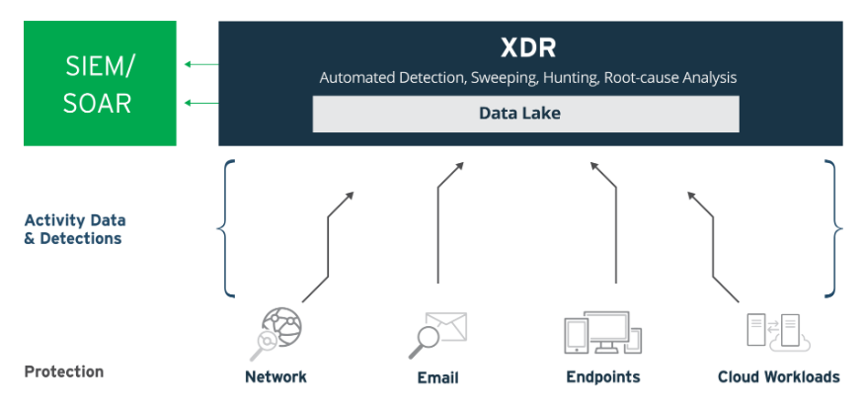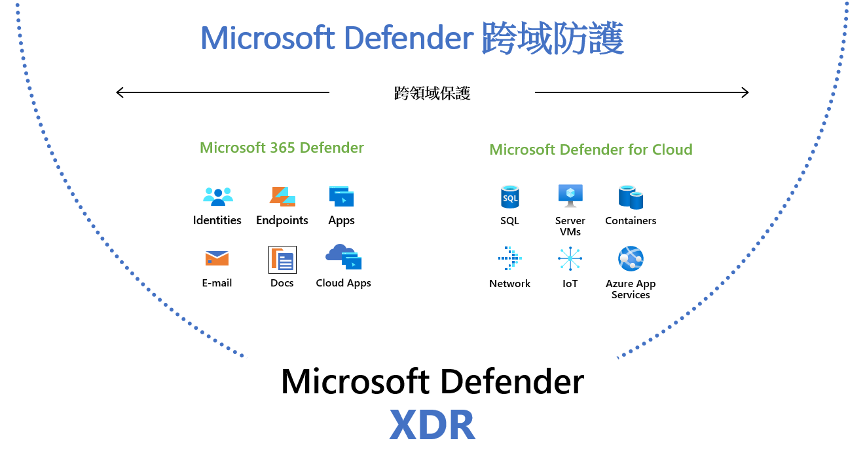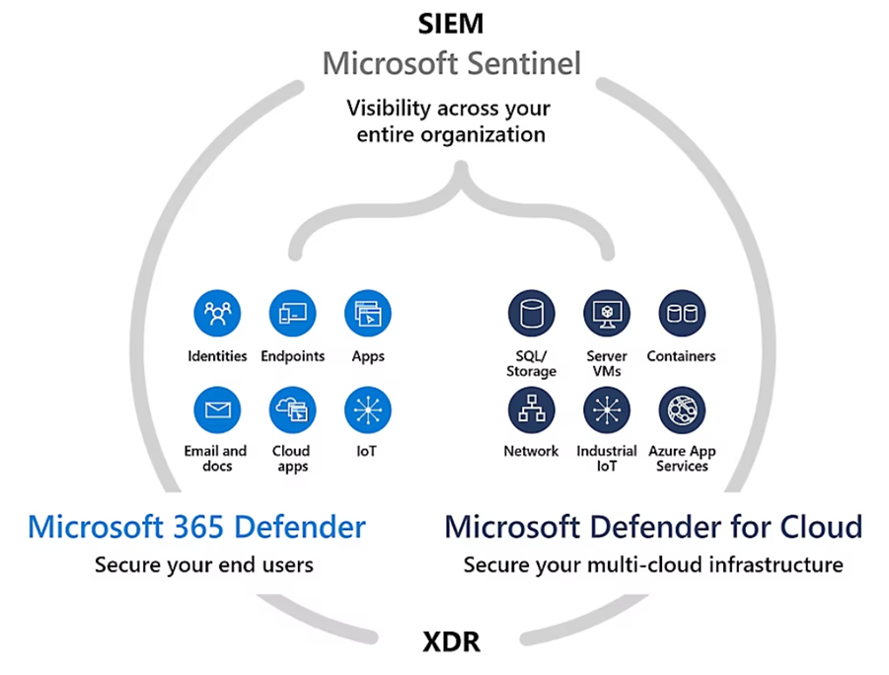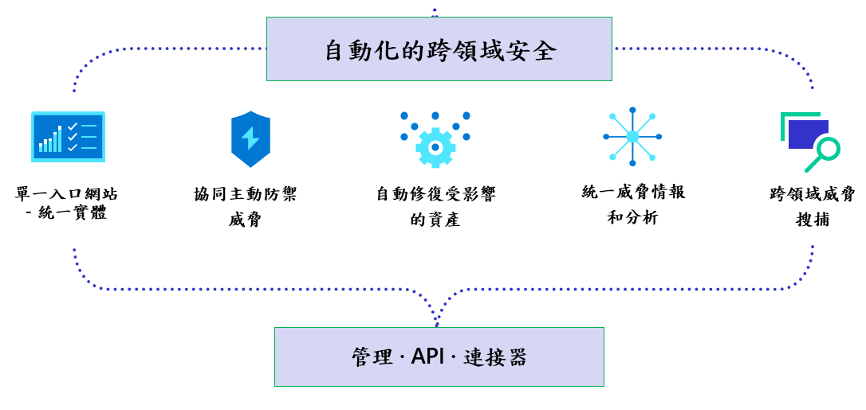Microsoft Defender XDR Extended Detection and Response Service
Extended Detection and Response (often abbreviated as XDR) is a security threat protection tool that integrates security products and data into simplified solutions to provide comprehensive and optimized security. XDR breaks down the barriers between security products and adopts a more comprehensive approach to detection and response. XDR collects and cross-correlates detection events and in-depth activity data across multiple protection layers. Information security analysis can be used to provide faster threat detection and improve investigation and response times.
The threat landscape faced by enterprises is changing rapidly, and the workforce in multi-cloud and hybrid environments also presents enterprises with complex security challenges. XDR security features respond to these situations, resulting in more effective and proactive solutions. Compared with systems such as Endpoint Detection and Response (EDR), XDR expands the scope of security and can collect and automatically cross-correlate data covering multiple protection layers for a wider range of products, including : Integrated protection for email, endpoints, servers, cloud workloads and networks. From there, XDR combines protection, investigation and response to provide visibility, analysis, correlated event alerts and automated responses to improve data security and combat threats. XDR addresses the limitation of EDR that the threats it detects and responds to only cover managed endpoints. Extending the scope of threat detection to be comprehensive, ultimately improving the effectiveness of the overall threat response.

Service Features
Complementing SIEM
Enterprises use SIEM to collect log files and alerts for various products. Although SIEM allows enterprises to integrate information from various places, it may also result in a large number of individual alert notifications. It is difficult to determine which warnings are important and require attention from these single warning notifications. Relying only on a single SIEM system makes it difficult to conduct complete cross-correlation analysis of all collected log file data, and it is impossible to grasp a more complete security status.
From the perspective of XDR, it can collect in-depth activity data and import the information into Data Lake. Perform scans, searches and investigations across multiple data sources. With the power of AI and big data analysis, small-volume, high-quality warnings can be mined from this rich data, and then sent to the SIEM system. XDR is not meant to replace SIEM, but rather complements SIEM to shorten the time security analysts spend evaluating relevant alerts and log files, and to help them determine which alerts need attention and conduct in-depth investigation. The integrated SIEM and XDR solution enables SecOps teams to detect, investigate, respond to and prevent threats through a fully integrated set of capabilities, including security information and event management (SIEM), security orchestration processes, Automation and response (SOAR), behavioral analytics (UEBA), extended detection and response (XDR), and global threat intelligence.
XDR complements existing enterprise security information and event management (SIEM) systems. SIEMs are primarily detection tools that aggregate large amounts of shallow data and identify security threats and anomalous behavior, but cannot respond to or remediate threats, often requiring a manual response. XDR provides this kind of response capability, leveraging the vast amounts of data provided by SIEM tools, and the two work together to form an organization's security portfolio.
Microsoft Defender is one of the leading brands in XDR solutions, and its products include Microsoft 365 Defender & Microsoft Defender for Cloud. Enterprises can gain best-in-class threat intelligence and automated attack disruption of the most sophisticated attacks with integrated Extended Detection and Response XDR solutions. Use XDR capabilities to find vulnerabilities across your entire cloud setup, strengthen your environment's overall security posture, and protect workloads across multi-cloud and hybrid environments from evolving threats.

Comprehensive integration with Microsoft Defender XDR helps enterprises move from separate silos to coordinated cross-domain security protection. Achieve comprehensive integration in an automated manner. Across four areas:

Based on years of cloud maintenance experience and cooperation with Microsoft, Acer eDC has become Taiwan's first cloud security monitoring service provider with Azure Sentinel and Microsoft Defender as dual-center platforms. In terms of promotion, in addition to Cloud SOC outsourcing services, Acer eDC also provides simple cloud system integration Cloud SI services, which can help enterprises introduce planning, education and training, and threat detection and hunting skills, including Microsoft XDR.

Applicable Objects Include
manufacturing, financial services, retail and e-commerce, and new start-up companies.
Service Benefits
provide enterprises with comprehensive, flexible and effective threat protection. Use automated processes to provide broader visibility from a unified view so personnel can understand the threat landscape. Reduce your security and compliance costs by using Microsoft security solutions instead of multiple solutions. According to data provided by Microsoft, cost savings of up to 60% can be achieved.

Function Introduction
- Increased Visibility
Microsoft XDR expands an organization's horizons and provides a more comprehensive picture of its security posture. XDR integrates telemetry data from multiple endpoints, networks, emails, applications, and more to clarify the relationship between alerts and events, create greater threat visibility, and free up more analysis time and resources. - Data Collection and Integration
Microsoft XDR monitors data across an enterprise's technology environment, from endpoint devices and firewalls to cloud applications and some third-party applications. XDR identifies events and threats across your environment and correlates them to optimize the number of security alerts and give security teams a better understanding of cyberattacks. - Unified Analysis
Microsoft XDR automatically analyzes related incidents for faster and more efficient response and remediation. XDR's AI and machine learning capabilities can analyze large numbers of data points and instantly identify the source of attacks and malicious behavior, significantly faster than security teams trying to manually correlate incidents and remediate threats.
Functional Overview
- Real-time Threat Detection
Instantly identifies threats and deploys automated remediation to eliminate attackers' access or reduce the time they have to access your organization's data and systems. - Manage Event Priorities to Improve Processing Efficiency
The incident will be evaluated and weighted assessment results will be provided, and then remedial measures and recommended actions will be prioritized based on major industry standards, regulatory standards or the company's customized requirements. Centralized management tools increase the accuracy of alerts and simplify the number of solutions analysts must access when assessing threats.
-
Integrated Response Across Multiple Security Tools
Provides centralized analysis, response, and remediation for an enterprise's security products. Integrate common automated response SOAR and coordination processes to simplify security operations and speed up response to threats. Provide relevant automation tools to automate repetitive tasks and reduce analysis manpower. -
Leveraging AI and Machine Learning
Use AI and machine learning to build scalability and improve efficiency. From behavior detection and alerting, to investigation and remediation, XDR uses AI to monitor threat behavior and automatically respond to and mitigate possible attacks. Using machine learning, XDR can create profiles of suspicious behavior and flag them for review by analysts. -
Optimize the Role of Security Analysis Tool
XDR in the enterprise. In an increasingly complex threat landscape, a flexible and efficient XDR system is a good tool for enforcing security and remediation. For enterprises that want to optimize security analysis time and workload, XDR systems provide the highest efficiency and reduce the time malicious users can stay on the enterprise network. XDR can be smoothly integrated into the existing ecosystem of the enterprise, minimizing the time to go online and maximizing efficiency.



